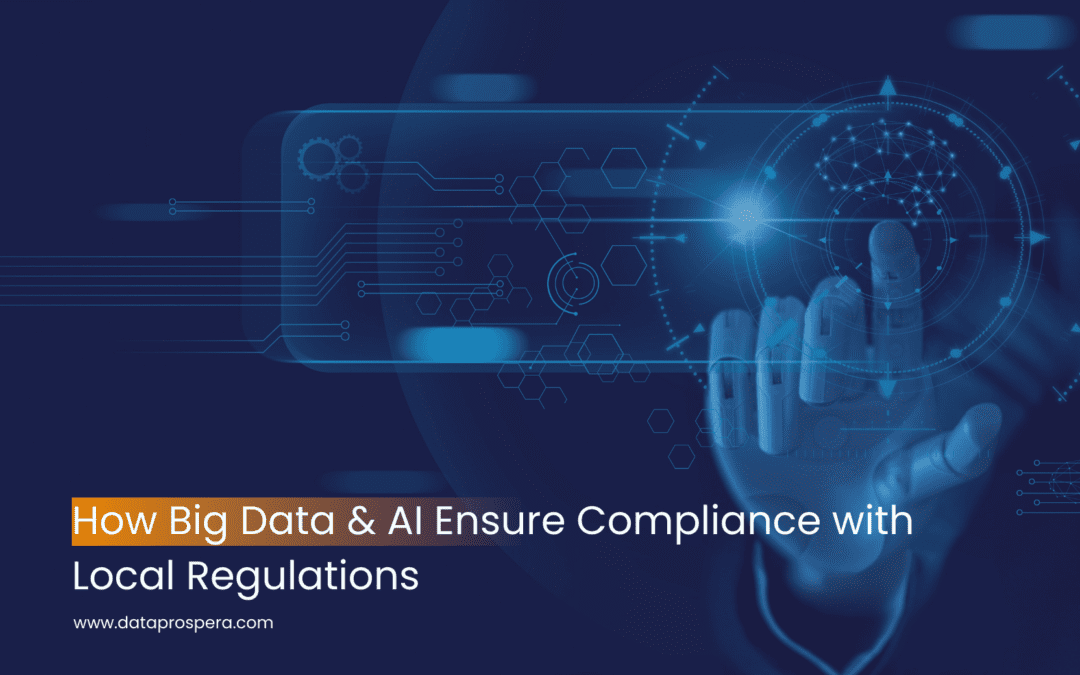As businesses navigate an increasingly complex regulatory landscape, ensuring compliance with local laws and industry standards is more challenging—and critical—than ever. Fortunately, the combined power of Big Data and Artificial Intelligence (AI) is transforming how organizations meet compliance demands. From automated reporting to real-time anomaly detection, these technologies provide the tools enterprises need to stay ahead of evolving rules. According to IBM, regulatory compliance involves adhering to laws, policies, and regulations—and AI can play a pivotal role in managing that complexity.
The Rising Tide of Local Regulations
Governments worldwide are implementing stricter regulations around data privacy, financial reporting, environmental sustainability, and more. In Indonesia, for instance, the Personal Data Protection (PDP) Law mandates businesses to protect consumer data or face legal penalties. Companies must also comply with sector-specific requirements such as OJK (Otoritas Jasa Keuangan) regulations in finance or BPOM standards in health and food sectors.
Failure to comply can lead to heavy fines, loss of customer trust, and even operational shutdowns. That’s why modern organizations are turning to Big Data and AI to not just comply—but to do so efficiently and proactively. Learn how this shift also supports broader goals in our blog on Data Governance in the AI Era.
How Big Data & AI Drive Compliance
1. Automated Data Collection & Reporting
Big Data platforms allow businesses to collect massive amounts of data across multiple systems—whether from transactions, logs, sensors, or user interactions. AI then structures and analyzes this data to automatically generate reports that align with regulatory formats. The World Economic Forum highlights how AI can reduce manual effort in compliance and enhance accuracy.
- Reduces human error in reporting
- Saves time and cost on compliance audits
- Keeps documentation ready for inspections or legal requests
2. Real-Time Monitoring & Anomaly Detection
AI-powered systems can continuously monitor operations to flag unusual behavior that may indicate non-compliance. For example, in financial services, machine learning models detect unusual transactions that may breach anti-money laundering (AML) rules.
- Early warning for violations
- Prevention of financial fraud
- Continuous audit trail
Explore how these techniques help improve operations in our blog on AI in IT Service Management.
3. Regulatory Intelligence & Updates
Staying current with shifting regulations is daunting. AI systems can scan and analyze new laws, flagging relevant changes for your business and updating compliance protocols accordingly.
- Reduces reliance on manual legal monitoring
- Minimizes risk of falling out of compliance
- Supports multi-region operations with local rule recognition
4. Data Governance & Access Control
Big Data platforms enforce data governance policies such as access restrictions, encryption, and audit trails. AI enhances this by predicting and preventing unauthorized access or misuse based on behavioral patterns.
- Supports adherence to data privacy laws like GDPR and PDP
- Ensures only authorized personnel access sensitive data
- Tracks and logs all data handling actions
5. Predictive Risk Management
Machine learning algorithms analyze historical and real-time data to identify risk patterns. This enables businesses to proactively address potential compliance breaches before they occur.
- Prioritizes high-risk areas for audits
- Optimizes resource allocation for risk mitigation
- Enhances organizational resilience
Real-World Example: AI in Financial Compliance
Banks and fintech companies are leveraging AI to automate credit scoring, monitor real-time transactions, and maintain compliance with OJK and BI (Bank Indonesia) regulations. AI ensures that processes are not only fast but also legally sound, reducing both operational costs and regulatory risks.
Learn more about How AI & Big Data Identify Security Threats in Data Centers.
Challenges and Considerations
While the benefits are significant, deploying Big Data and AI for compliance also comes with challenges:
- Data Quality: Poor-quality data can lead to inaccurate compliance reports.
- Model Transparency: AI models must be explainable to regulators.
- Cost of Implementation: Setting up the right infrastructure can be capital-intensive.
Organizations must also ensure they comply with regulations on AI use itself, including fairness, accountability, and bias prevention.
The Future: Compliance as a Competitive Advantage
As AI and Big Data technologies continue to evolve, compliance will no longer be seen as a burden but as a strategic asset. Businesses that can prove regulatory trustworthiness will enjoy better stakeholder confidence, smoother audits, and enhanced market reputation.
Conclusion
Big Data and AI are revolutionizing how companies handle regulatory compliance. From automating audits to detecting risks in real-time, these technologies offer a proactive and scalable solution to one of the most pressing challenges in modern business.
By integrating intelligent systems into your compliance strategy, you’re not just avoiding penalties—you’re building a more resilient and trusted organization.
Explore more insights by visiting our blog on The Role of AI in IT Service Management or deep dive into Data Governance in the AI Era.


Recent Comments